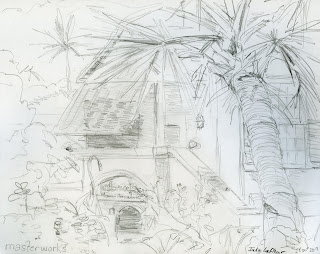Ever
the Twain Shall Meet
Mark
Twain in Bermuda
Of all
the artists who were inspired by Bermuda’s muse—Georgia O’Keeffe, Winslow
Homer, John Lennon, Andrew Wyeth, Moores both Tom and Henry, and Albert
Gleizes, Mark Twain was Bermuda’s greatest advocate and ambassador. Masterworks Museum of Bermuda Art together
with The Mark Twain House and Museum in Hartford, Connecticut celebrate
Clemens’ deep connection to the Island in “Ever
the Twain Shall Meet: Mark Twain’s Bermuda,” a special exhibit open through
June, 2014. With the exception of Wyeth,
visitors can see examples from all of the above luminaries at Masterworks upon
request, although they might find themselves too enthralled by Twain to tear
themselves away from this jewel of an exhibit.
Mark
Twain visited Bermuda eight times for a total of 187 days between 1867 and 1910.
Enchanted, he wrote "there is just
enough whispering breeze, fragrance of flowers, and sense of repose to raise
one's thoughts heavenward; and just enough amateur piano music to keep him
reminded of the other place....” Twain’s
writings extoll the peaceful beauty of the island (as well as its sometimes
dissonant charm) and were published between 1877-78 in The Atlantic Monthly as “Some Rambling Notes of an Idle Excursion.”
A
treasure trove of objects is on display in Masterworks’ Mezzanine Gallery. Highlights include Mark Twain’s favorite pen,
his shirt (an integral part of his iconic white “dontgiveadamn suit”) and
a handwritten note from Clemens to one of his “angelfish,” surrogate
granddaughters whom he cherished for their innocence. The note reads, “It is far better to be a
young junebug than an old bird of paradise. You owe me a visit Dorothy, dear… Come — pay
up and save your character!” Without
being too heavy-handed, we urge you to visit Masterworks Museum of Bermuda Art
to see the Island through Twain’s eyes, to bask in a literary paradise…to save your
character.


















